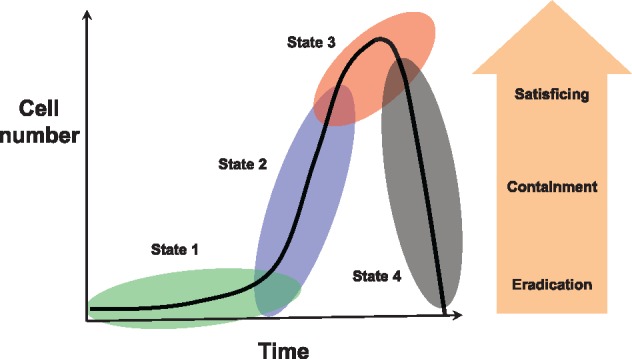Figure 2.

Four states in BEA and associated disease. This classification is based on growth in a novel and hostile environment (State 1), BEA population size (cumulative number of births) and therefore evolutionary potential (State 2), and spread and colonization of local and distant within-host habitats with correspondingly greater impact of disease on the host (State 3). Therapeutic objectives (eradication, containment, satisficing) change with progression through the three first states (it is assumed that natural remission (State 4) will not be subject to therapeutic intervention). In particular, although optimal protocols are feasible in States 1 and 2, treatment options may be limited to ‘satisficing’ in (late) State 3, for example due to reduced tolerance to drug toxicity. Should the immune response and any corresponding inflammatory response be sufficient, then the BEA and associated disease would regress to the healthy tissue state and homeostasis (State 4). This is shown for remediation from State 3, but it could also occur at States 2 or 1. See main text for further discussion
